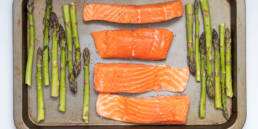The Mighty Mitochondria:
The eye has very high energy demand!
Mitochondria and Energy Production:
Mitochondria transform food and oxygen into energy that our cells can use, power plants. This process, however, produces waste products known as “free radicals.” If not properly managed, these free radicals can cause oxidative stress, leading to cell damage and accelerated aging. The goal is to help mitochondria work efficiently, minimizing the production of these harmful free radicals.
Improving Mitochondrial Health:
Mitochondrial health is critical because poor mitochondrial function is linked to several serious diseases, including heart disease, diabetes, and neurological conditions and of course eye disease.
How can we support these balls of energy?
Nutrition plays a role as we need key micro and macronutrients to keep the wheels turning effortlessly. Here is a list of some highlights:
- Magnesium: It helps maintain heart health, manage blood pressure, and can improve mood and supports many cellular pathways. Found in nuts, seeds, some grains, green leafy veges and more!
- Carnitine: Helps transport fats into mitochondria where they are burned for energy. Many meats and even some soy products have carnitine!
- B Vitamins (8 of them): These are directly involved in energy production within the mitochondria and help protect against oxidative stress. Found in a variety of foods from clean protein options to vegetables!
- Omega-3 Fatty Acids (EPA & DHA-highest in the eye): Used by mitochondria to produce energy. They also reduce inflammation, which helps protect mitochondria. Best found in wild salmon!
- Alpha-Lipoic Acid (ALA): An essential nutrient for energy production in mitochondria and acts as a powerful antioxidant to minimize oxidative stress.
- Vitamin C: Protects mitochondria from damage caused by oxidative stress and is linked to improved cognitive performance. Found high in citrus fruits and kiwis and even broccoli!
- N-Acetyl Cysteine (NAC): NAC helps boost the body’s levels of glutathione, a potent antioxidant that protects mitochondria. From amino acid cysteine, found in meats, legumes, nuts and seeds.
- Coenzyme Q10 (CoQ10): Plays a critical role in generating energy in the mitochondria. It has antioxidant and anti-inflammatory properties that support mitochondrial efficiency. Found in nuts, seeds, high in organ meats and some fish.
I hope you enjoyed learning a bit about this cellular powerhouse.
In health,
Neda Gioia OD, CNS, FOWNS, CFMP



